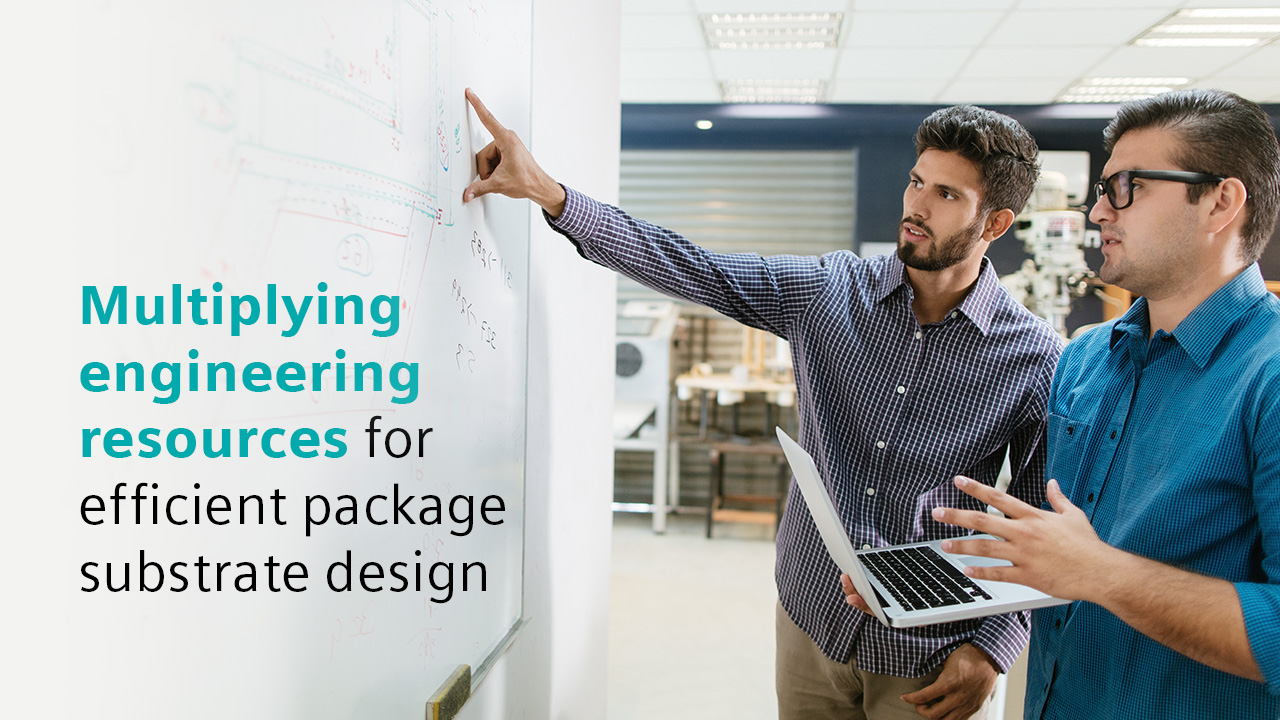Multiplying engineering resources for efficient package substrate design

In the world of package substrate design, the age-old saying, “many hands make light work,” holds more truth than ever. The complexity, size, and content of modern heterogeneously integrated packages make it increasingly challenging for a single designer to ensure design adherence to fabrication and assembly rules, while also achieving Power, Performance, and Area (PPA) and cost goals.
The limitations of traditional design approaches
Historically, companies have relied on design shifts to tackle this challenge, particularly beneficial for geographically dispersed teams. In this model, three different designers could work eight-hour shifts to deliver a continuous 24-hour design cycle. While this approach may work for some companies, it has limitations:
- Expertise limitation: only one designer’s expertise is applied at a time, which can be insufficient for designs with multiple challenges requiring diverse areas of expertise.
- Complex requirements: a myriad of requirements must be met, including IR drop, power supply stability, metal area and fill specifications, thermal and mechanical stress analyses, and layout versus schematic (LVS) signoff, among others.
- Design challenges: no single designer can be expected to master every domain, leading to potential bottlenecks and delays.
The power of concurrent team design
Enter concurrent team design—a transformative approach that leverages the collective expertise of multiple design domain specialists working concurrently in real-time. Imagine having three to five different experts focusing on specific design challenges aligned with their expertise, all working together seamlessly.
Key benefits of concurrent team design:
- Real-time collaboration: designers can see what others are working on, fostering collaboration and reducing miscommunications.
- Floorplan restriction areas: designers can set up floorplan restrictions to inform others not to focus on specific areas, streamlining the design process.
- Multiplying engineering resources: by harnessing the power of multiple experts simultaneously, engineering resources are effectively multiplied.
- Shorter design cycle: with specialized experts working concurrently, design cycles are significantly reduced.
- Improved design quality: leveraging the expertise of specialists in different domains ensures a comprehensive and high-quality design.
- Faster time to volume manufacture: efficient design processes lead to quicker transitions from design to manufacturing.
Embracing the future of design
Concurrent team design offers a powerful design environment that addresses the limitations of traditional design approaches. By bringing specialists into the picture concurrently, companies can achieve a shorter design cycle, improved design quality, and faster time to volume manufacture.
In conclusion, as package substrate designs continue to grow in complexity, embracing concurrent team design is not just a strategy—it’s a necessity for success. By multiplying engineering resources and fostering collaboration among experts, concurrent team design enables companies to overcome design challenges more effectively and efficiently than ever before. Embrace the future of design with concurrent team design and unlock new possibilities for innovation and growth.
Read more about this concept and more in our eBook: IC Package physical design best practices


